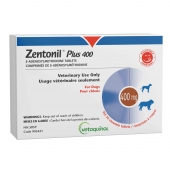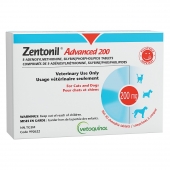Cats and dogs share their owners’ homes, lifestyle, hobbies … and sometimes health issues. Here are some pet diseases and conditions also found in humans or which, in some cases, may spread to them.
Diabetes
This condition affects humans, cats and dogs similarly—the body becomes unable to process glucose, a type of sugar used as an energy source. All species’ symptoms include excessive drinking, urination, and weight loss, even with increased appetite. According to the American Veterinary Medical Association, obese pets, dogs between 7 and 10 years of age, and cats over 6 years old are most diagnosed with diabetes[1]. It can be managed through insulin injections, daily exercise and special diets.
Periodontal disease
The same thing happens to dogs and cats who lack proper dental care as humans who stop brushing their teeth. Soon after eating, the mix of saliva, sugar and bacteria inside your pet’s mouth creates plaque. Unless it’s removed through regular brushing, plaque hardens into calculus and creates a highly suitable environment for bacteria. Left unchecked, plaque may reach the gums and cause gingivitis, an inflammatory reaction.
An early diagnosis by your veterinarian and proper dental care may reverse the damage before teeth become loose and must be extracted. Brushing your dog’s or cat’s teeth daily or switching to a specially formulated oral care dry pet food recommended by your veterinarian are the best ways to prevent this painful condition.
Hyperthyroidism and hypothyroidism
A malfunctioning thyroid gland can cause similar symptoms in some pets as in humans. Excessive hormone production (hyperthyroidism) causes some middle-aged and senior cats[2] (or more rarely, dogs) to be hyperactive, restless, and lose weight despite having a ravenous appetite. Treatment options include surgery, medication and radioactive iodine injection.
Conversely, insufficient hormone production (hypothyroidism) is more common among mid to large-sized dogs between 4 and 10 years old[3] (though it is occasionally reported in cats), making them lethargic, intolerant to the cold and prone to obesity. Certain breeds could be predisposed to this condition, including golden retrievers, dachshunds and cocker spaniels3. Daily oral medication can help manage this health issue.
Epilepsy
This neurological disorder consists of recurring seizures and is estimated to affect roughly 1 in 135 dogs[4]. Such episodes can be generalized – marked by involuntary muscle movements, confusion, salivation and urination/defecation – or localized, which can involve subtler symptoms such as facial twitches, pupil dilation or behavioural changes. While rarer, cats may also be diagnosed with epilepsy when experiencing chronic seizures with no other apparent cause.
AIDS
In North America, approximately 2.5%[5] of cats are infected with feline immunodeficiency virus (FIV), which attacks and weakens their immune system. Its transmission mainly occurs through bite wounds from an infected animal. The virus may progressively lead to an immune-compromised state referred to as feline acquired immune deficiency syndrome (feline AIDS), though this process may take several years[6]. While similar to human immunodeficiency virus (HIV) and AIDS in people, there’s no evidence these feline conditions can be transmitted to humans5.
Arthritis
Approximately 45% of dogs over 8 years old and 90% of cats over 12 live with arthritis. This degenerative disease causes inflammation of the joints, decreasing mobility and causing pain. While incurable, arthritis can be managed through a combination of medication, daily exercise, reaching and maintaining a healthy weight and dietary adjustments.
Zoonotic diseases
Such diseases are caused by parasites, bacteria, viruses and fungi and may spread between animals and people. In Canada, the BC Centre for Disease Control and Public Health Ontario list brucellosis, giardiasis, leptospirosis, rabies, salmonella, toxoplasmosis and tularemia[7],[8] as conditions which may be acquired from cats or dogs, typically by being bitten by an infected animal or through contact with their feces.






